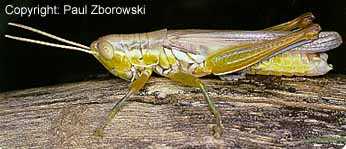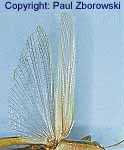Adult description 8 of 15


Size: Females of B. brachycelus 25 to 35 mm, males 20 to 25 mm. Other species females up to 40 mm.
Adult Description: Colour in all species of Bermius is mainly green with light olive greens and yellow greens dominant on the body and legs while fawn brown along the entire top of body. All species characterised by a smooth, shiny almost 'porcelain' like texture. This is shared with several very closely related genera like Bermiella, Bermoides and Oxya, but very different to the rougher texture and patterns of most economic species. A light stripe on the side of the thorax to the rear legs. In profile the head, thorax and wings are level. Rear leg femur a lighter green than the body with a light brownish top and knee. The tibia sometimes bluish to pink tint. Hind wings clear. A downward pointing throat peg present.
Confusion with Australian plague locust: A similar size and shape only.
Confusion with Aiolopus: Similar elongate and often green bodyUnique features: The shiny smooth texture and light green colours, with a throat peg, are unique to this group. No red shanks and 'X' mark on the thorax.
Further information on this species: Description of nymph
